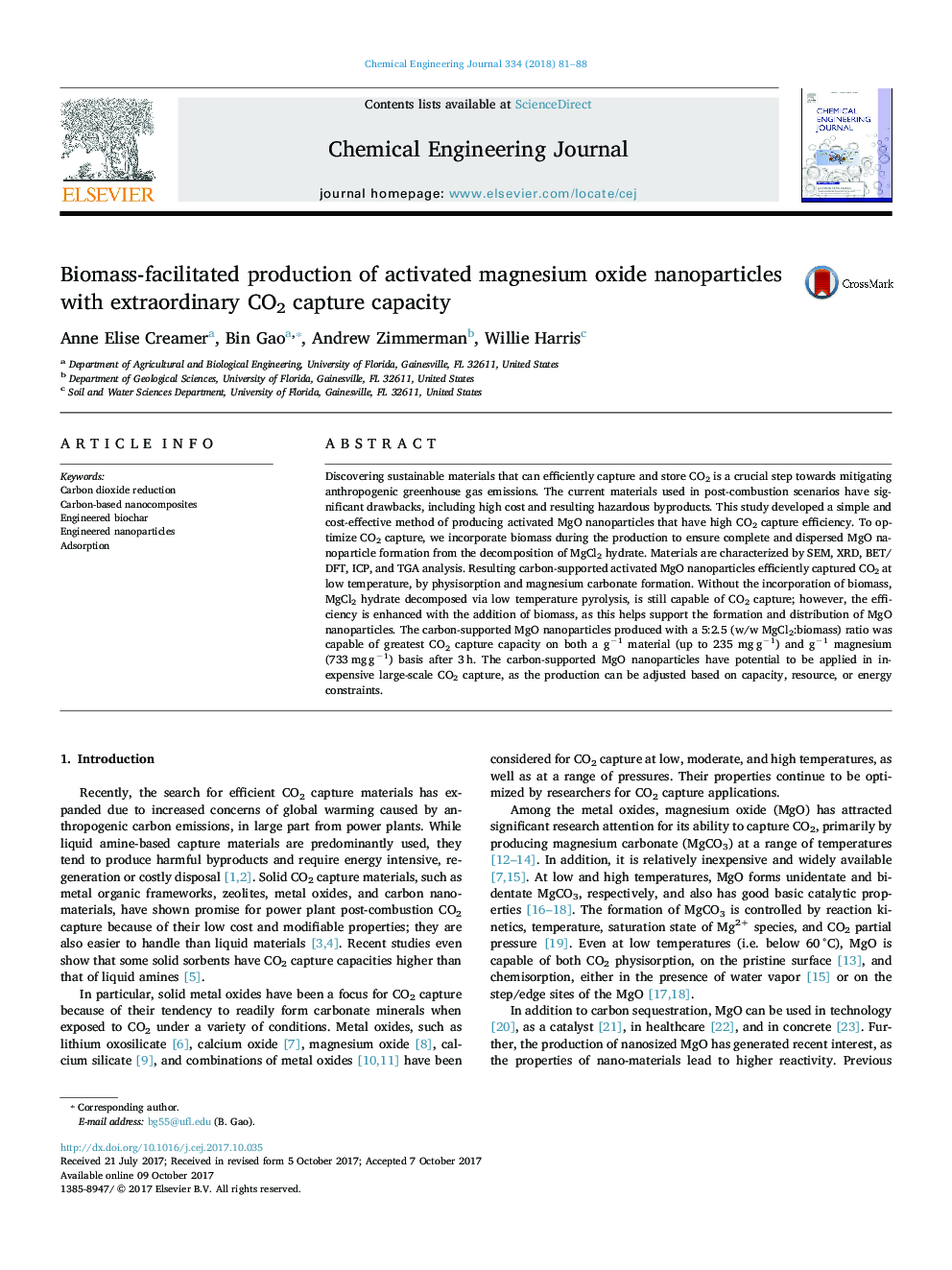| Article ID | Journal | Published Year | Pages | File Type |
|---|---|---|---|---|
| 4762661 | Chemical Engineering Journal | 2018 | 8 Pages |
Abstract
Discovering sustainable materials that can efficiently capture and store CO2 is a crucial step towards mitigating anthropogenic greenhouse gas emissions. The current materials used in post-combustion scenarios have significant drawbacks, including high cost and resulting hazardous byproducts. This study developed a simple and cost-effective method of producing activated MgO nanoparticles that have high CO2 capture efficiency. To optimize CO2 capture, we incorporate biomass during the production to ensure complete and dispersed MgO nanoparticle formation from the decomposition of MgCl2 hydrate. Materials are characterized by SEM, XRD, BET/DFT, ICP, and TGA analysis. Resulting carbon-supported activated MgO nanoparticles efficiently captured CO2 at low temperature, by physisorption and magnesium carbonate formation. Without the incorporation of biomass, MgCl2 hydrate decomposed via low temperature pyrolysis, is still capable of CO2 capture; however, the efficiency is enhanced with the addition of biomass, as this helps support the formation and distribution of MgO nanoparticles. The carbon-supported MgO nanoparticles produced with a 5:2.5 (w/w MgCl2:biomass) ratio was capable of greatest CO2 capture capacity on both a gâ1 material (up to 235 mgâ¯gâ1) and gâ1 magnesium (733â¯mgâ¯gâ1) basis after 3â¯h. The carbon-supported MgO nanoparticles have potential to be applied in inexpensive large-scale CO2 capture, as the production can be adjusted based on capacity, resource, or energy constraints.
Related Topics
Physical Sciences and Engineering
Chemical Engineering
Chemical Engineering (General)
Authors
Anne Elise Creamer, Bin Gao, Andrew Zimmerman, Willie Harris,
